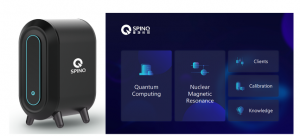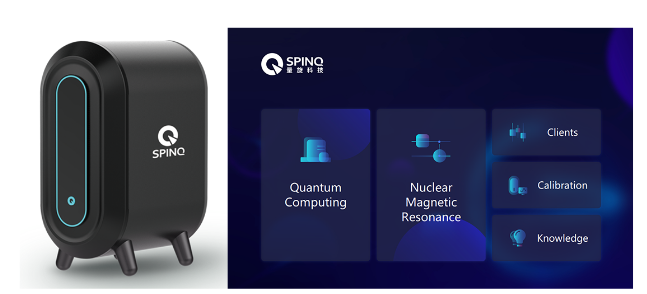
Scientists from quantum startup SpinQ Technology gave new details on its commercial two-qubit desktop quantum computer that can be used for educational purposes — and hinted at future directions for the machine.
The team reported on the device — originally launched in January 2020 as SpinQ Gemini — in ArXiv, a preprint research server. According to the researchers, this first-generation product is an integrated hardware-software system.
The hardware is based on a Nuclear Magnetic Resonance — or NMR — spectrometer that uses permanent magnets. The device operates under room temperature (0–30∘C) and only weighs about 55 kg. The scientists say the design, which is aimed at K-12 and university-level students, works for classroom use because it is cost effective, costing about $50,000 (US), and is easy to maintain.
The NMR model is critical to make a portable, desktop quantum machine, according to the research team, adding “With the development of permanent magnet technology in recent years, it is possible to bring down the size and cost of NMR spectrometers [42–46]. This then makes theNMR technology an ideal choice for building portable quantum computers.”

The quantum control capabilities help students and researchers learn about quantum control and quantum noise, the researchers report.
They added that institutions in Canada, Taiwan and Mainland China are now using the device.
The team wants to create new generations of the the SpinQ quantum computer that have more qubits and advanced control functions for researchers with comparable cost. They are also trying to significantly bring down the cost of the machine, aiming at a quantum computer that could be sold for under 5,000 USD) for K-12.
“We believe that low-cost portable quantum computer products will facilitate hands-on experience for teaching quantum computing at all levels, well-prepare younger generations of students and researchers for the future of quantum technologies,” the team wrote.
The research team includes: Shi-Yao Hou, Guanru Feng, Zipeng Wu, Hongyang Zou, Wei Shi, Jinfeng Zeng, Chenfeng Cao, Sheng Yu, Zikai Sheng, Xin Rao, Bing Ren, Dawei Lu, Junting Zou, Guoxing Miao, Jingen Xiang and Bei Zeng.
For more market insights, check out our latest quantum computing news here.

















